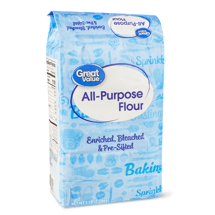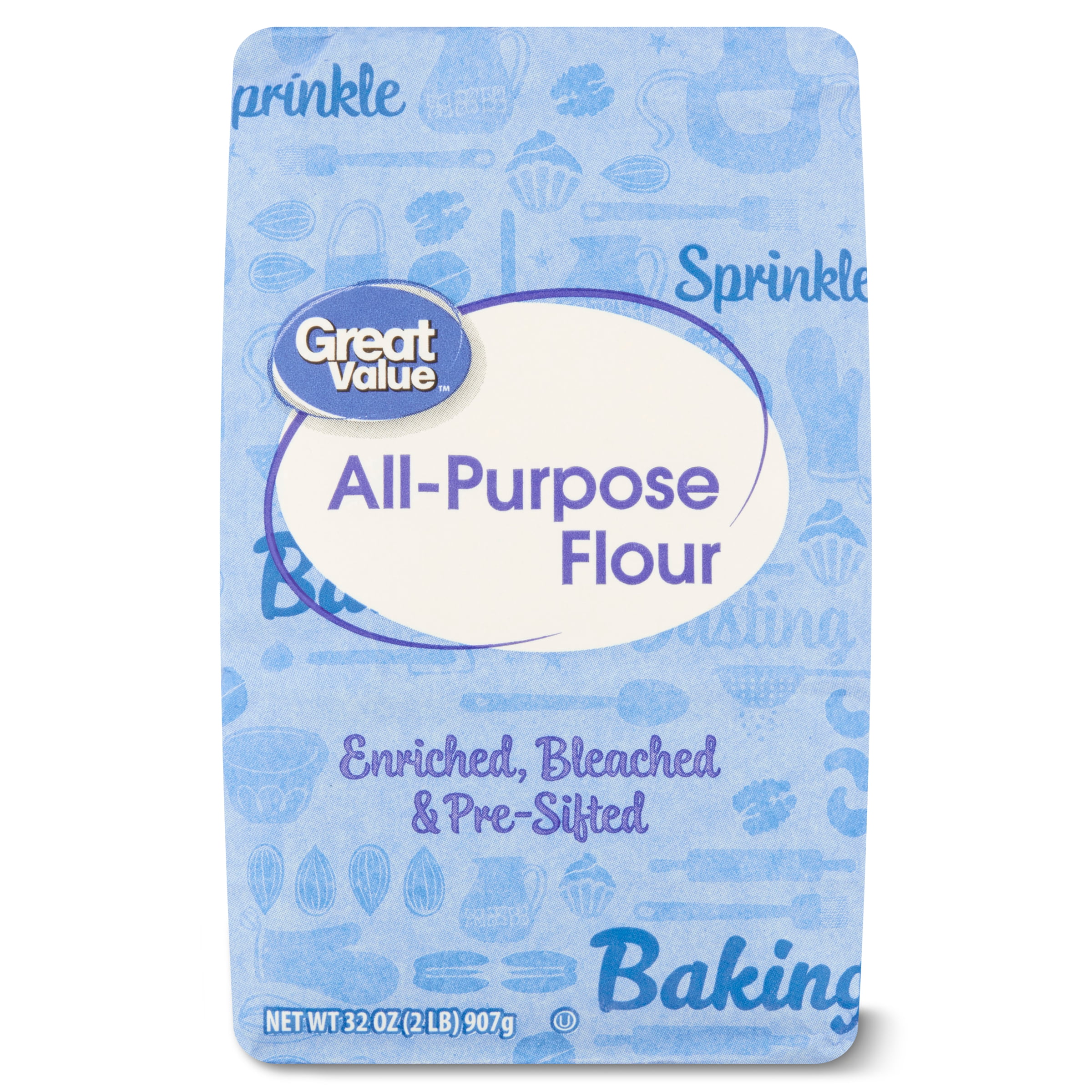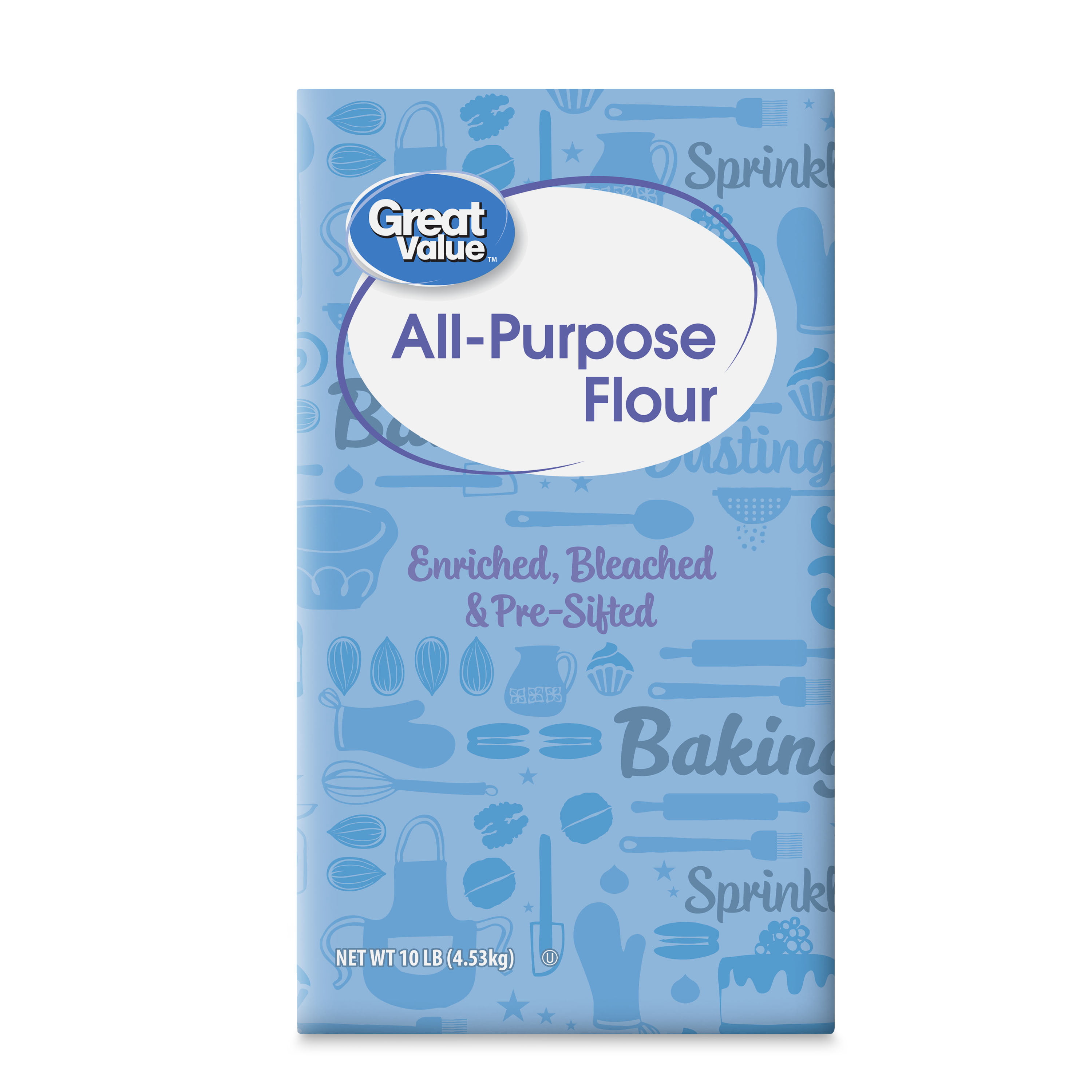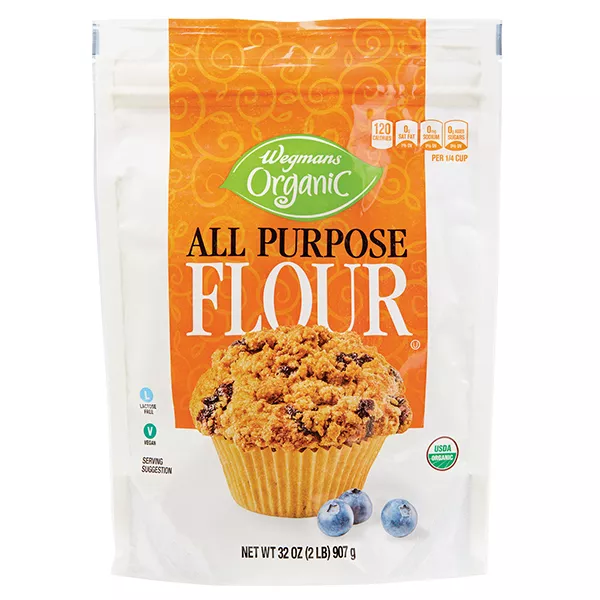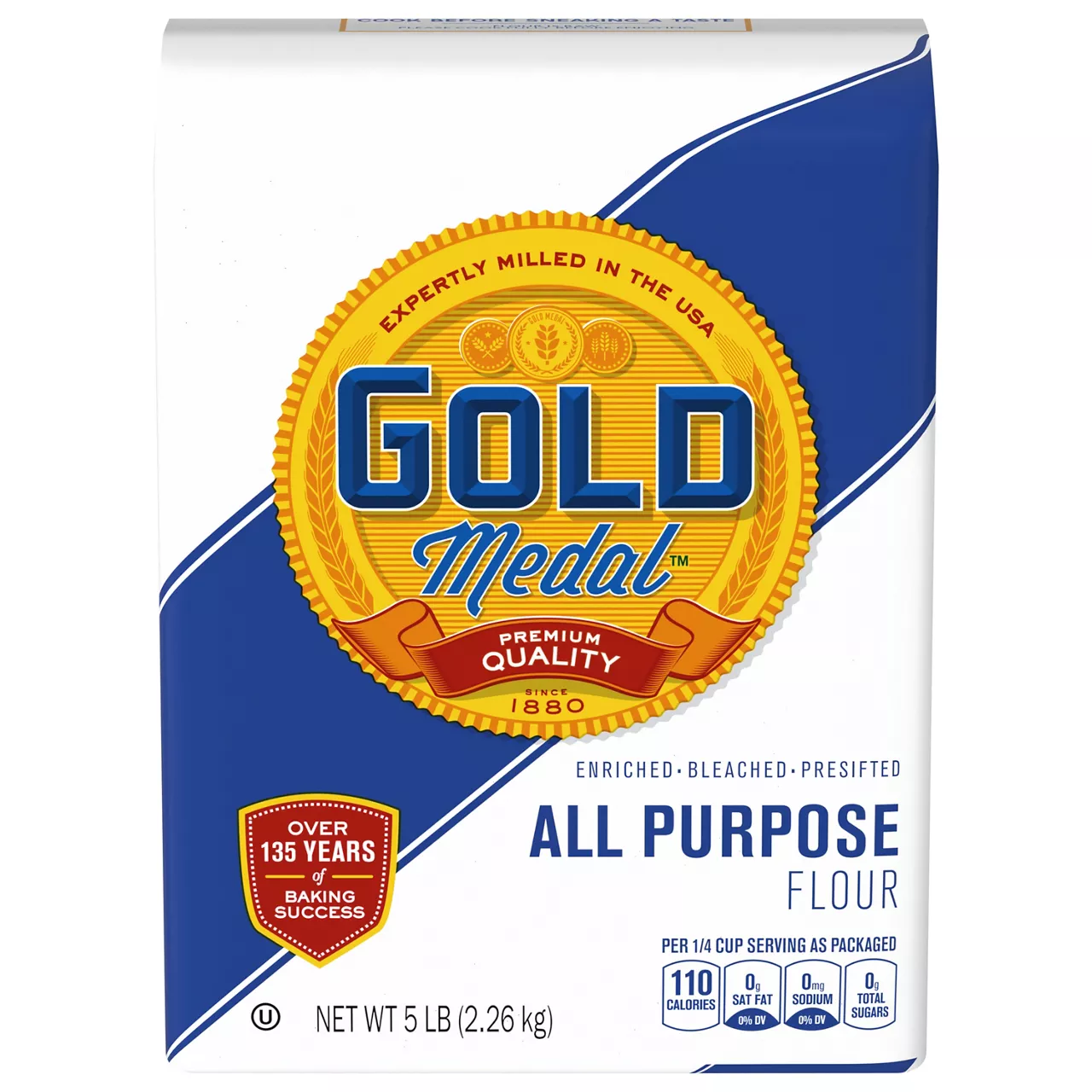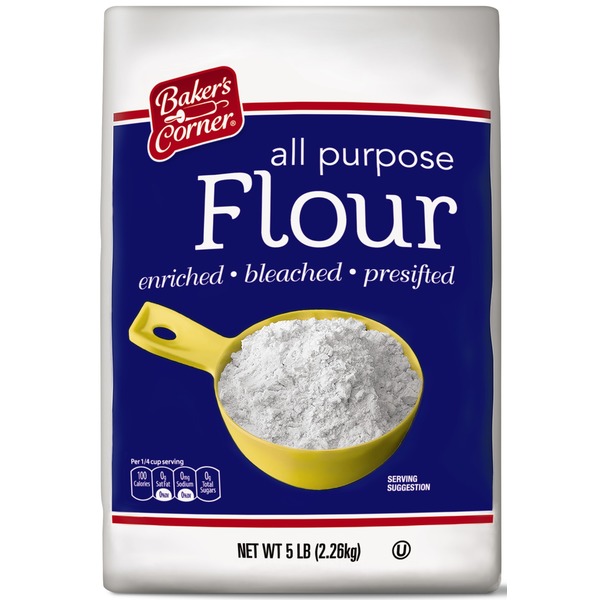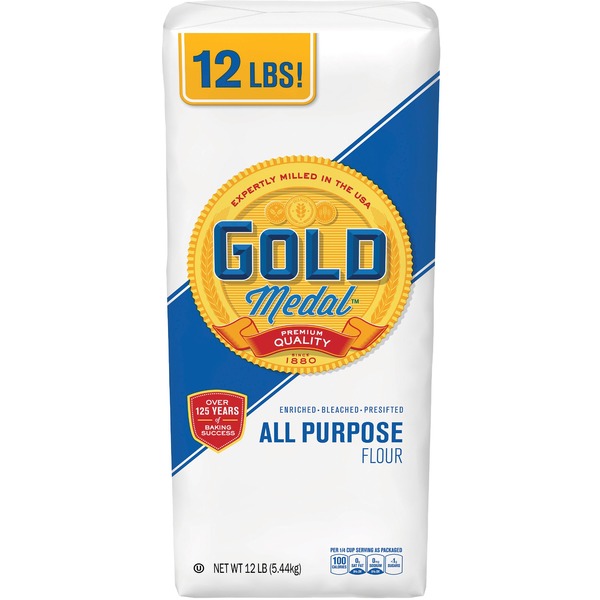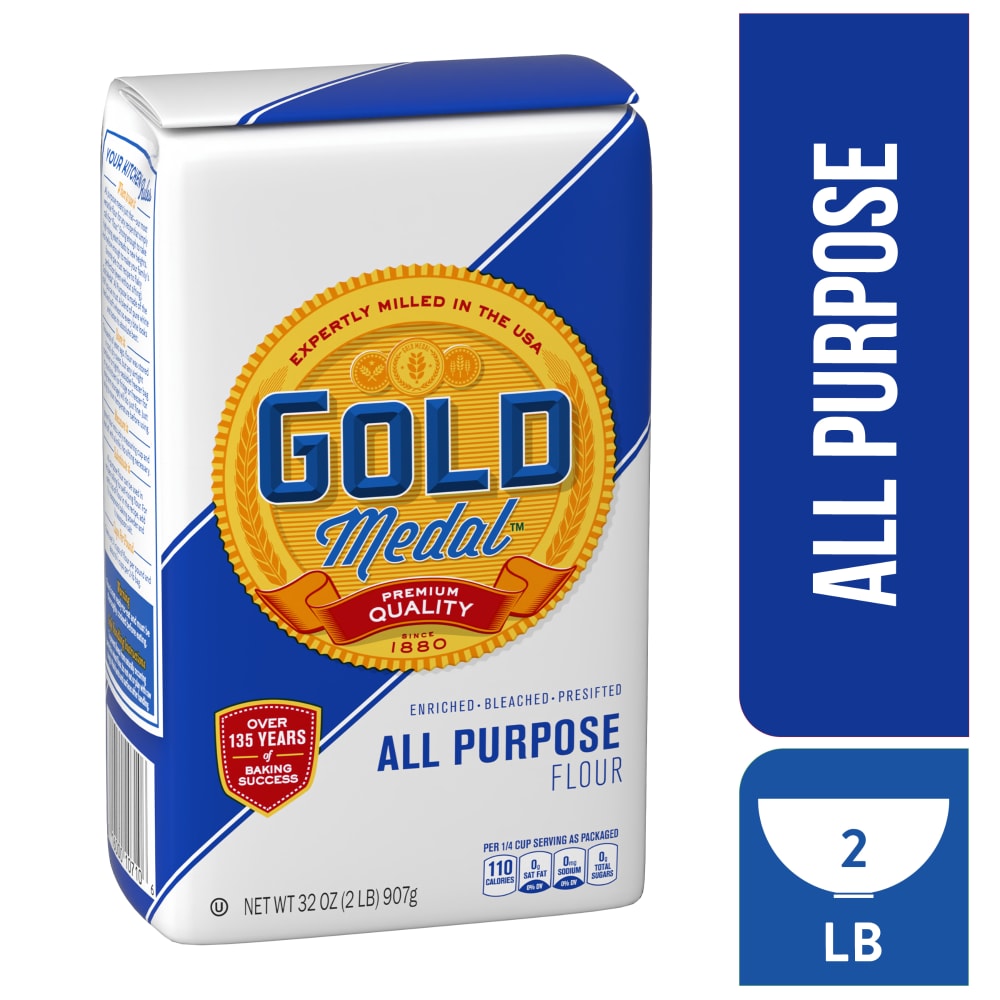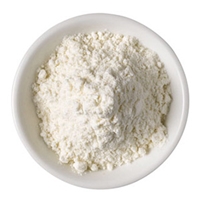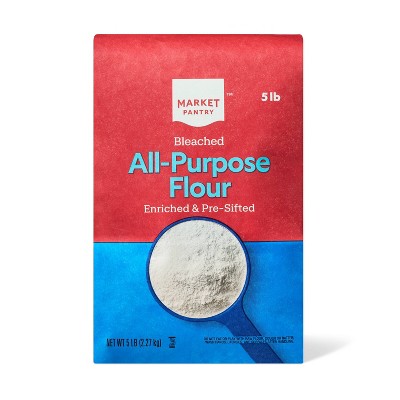BREADS
DESSERTS
MAIN DISHES
All Purpose Flour
All Purpose Flour is a true kitchen staple, versatile and always ready to lend itself to a multitude of culinary uses. This versatile white powder, milled from a mix of hard and soft wheat, is perfect for all kinds of baking - from breads and pies to cakes and pastries.
Beyond baking, All Purpose Flour also serves as a reliable thickener in sauces and soups, and is ideal for creating a crispy batter for frying. Its high gluten content ensures your baked goods will hold their shape well, hence its name as being suited for 'all purposes'.
87%
CARBS
1%
FAT
12%
PROTEIN
2,126 All Purpose Flour Products
Great Value Baking Supply Flour All Purpose Bleached Enriched Pre-Sifted
Great Value Enriched, Bleached & Pre-sifted All-purpose Flour
Great Value Enriched, Bleached & Pre-sifted All-purpose Flour
Wegmans Organic Flour, All Purpose
Gold Medal All Purpose Flour
Baker's Corner All Purpose Flour
Gold Medal All Purpose Flour
Gold Medal All-Purpose Flour
All Purpose Flour
Enriched, Pre-Sifted Bleached All-Purpose Flour
Used In 4,547 Recipes
4
Crunchy Homestyle Chicken Strips
5
Flavorful Turkey Sloppy Joes
3
Crispy Cinnamon Sausage Roll-Ups
6
Cheesy Beef Chili Mac with a Twist
3
Cheesy Chicken Bacon Ranch Penne
6
Golden Chicken with Velvety Garlic-Herb Sauce
2
Succulent Garlic Parmesan Chicken Delight
2
Garlic Lovers' Creamy Pasta Shells
All Purpose Flour Is Frequently Used With
All Purpose Flour FAQ
Flour, a fundamental ingredient in baking and cooking, is often misunderstood and underutilized. The primary error that people make while using flour is not knowing the proper type to use for various recipes. For example, using bread flour instead of cake flour can drastically affect the texture and taste of your food. To get the most out of flour, consider its type and special properties. White flour is versatile and mostly used, while whole wheat provides more nutrients; self-rising flour already contains baking powder and salt, and cake flour is milled to a fine consistency for a faint texture.
One little-known tip for using flour is to 'sift' it before adding to your mix. Sifting helps to remove any lumps and allows for a smoother mixing process. It can also make your baked goods lighter and more airy. Another trick is to properly measure your flour; instead of scooping it directly with a measuring cup, lightly spoon it into the cup and level off the top with a knife. This can prevent 'overpacking' of flour and keeps your measurements accurate.
What's the difference between whole wheat and white flour?
Can I substitute one type of flour for another?
Why should I sift my flour?
How do I measure flour correctly?
What is self-rising flour?
Why is my dough so tough?
Why do some recipes call for both flour and cornstarch?
What's the purpose of flour in a sauce?
Can I bake gluten-free with flour?
Why do cakes need flour?
Expiration & Storage Tips
When does flour expire?
Unopened flour typically lasts for about one year past the printed date on the package. After being opened, you can expect a good quality of flour for another eight months if stored properly. Whole wheat and other grain-based flours have a shorter lifespan and can stay fresh for about 3-6 months when unopened, and then 1-3 months after being opened. Flour can also be frozen to extend its life for up to two years.
How do you tell if flour is bad?
Telling if flour has gone bad is a multi-sensory task. First, check for any changes in the color. Most flours are white or off-white, and a yellowish tint can indicate that they are past their prime. Second, smell the flour. Fresh flour has a light, pleasant, grain-like smell. Any sour, musty, or otherwise 'off' smell is a sign your flour may not be safe to use. Lastly, inspect your flour for any signs of pest infiltration, like beetles or weevils, which are telltale signs the flour needs to be discarded.
Tips for storing flour to extend shelf life
• Store your flour in a cool, dark place. Heat, light, and moisture are the enemies of flour's freshness.
• Use an airtight container. Keeping your opened flour in its original bag won't protect it from the elements. Ideally, use glass or plastic airtight containers.
• Try to use older flour first – this is simply practicing first in, first out (FIFO).
• If you're looking to extend the shelf life of your flour even further, consider freezing it. Make sure it is sealed tightly to avoid moisture.
EXPIRES WITHIN
10 - 14
MONTHS
Equivalents
Substitutes

Pastry Flour

Bread Flour

Unbleached Cake Flour

Unbleached Pastry Flour

Cake Flour

Unbleached Bread Flour

Self Rising Flour
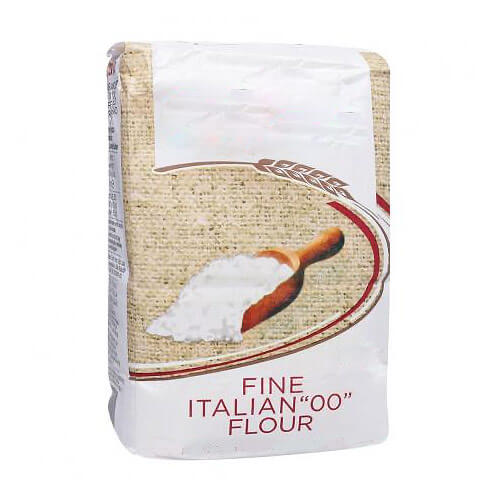
Tipo 00 Flour

Gluten Free Bread Flour

Gluten Free Self Raising Flour
See All
Health Info
Macros
93g
CARBS
1g
FAT
12g
PROTEIN
Allowed on these diets
LOW FAT
HIGH CALCIUM
VEGETARIAN
VEGAN
LACTOSE FREE
Contains these allergens
WHEAT

